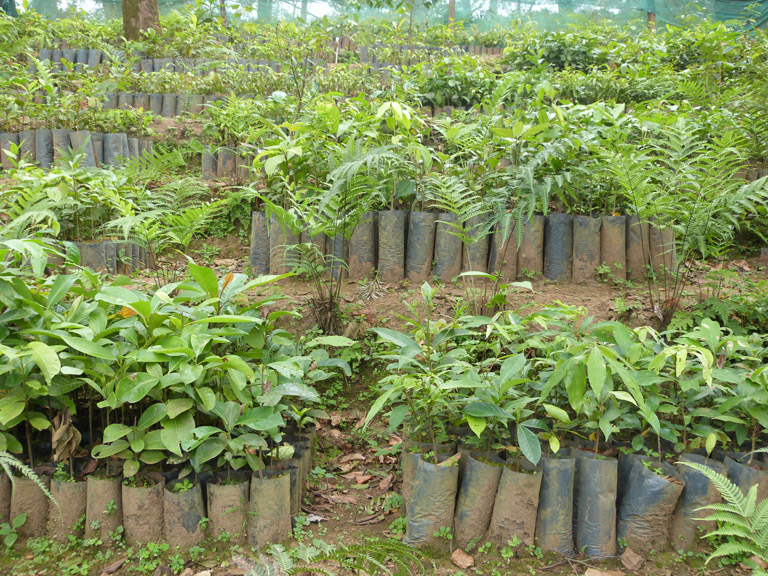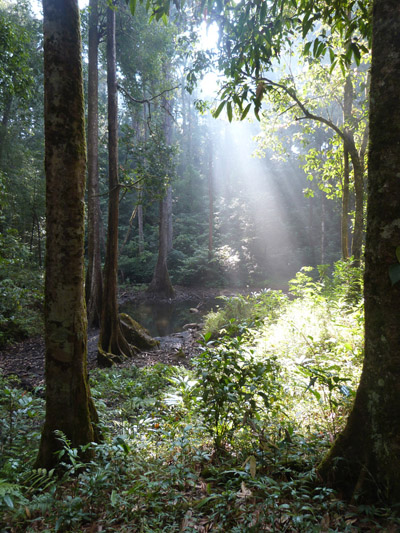- As we hear tales of environmental destruction from across the world, some conservationists are working not just to conserve what is left, but to put back what has been lost.
- A new website, www.restorationevidence.org, is working to gather the evidence for what works (and what doesn’t) to restore habitats and biodiversity globally. Run by the Endangered Landscape Programme and the Conservation Evidence project (where I work), the website aims to support decision-making by conservationists by providing them with concise summaries of scientific work.
- This will help those planning and implementing restoration projects globally to make the best possible decisions about how to spend restoration funds.
- This post is a commentary. The views expressed are those of the author, not necessarily Mongabay.
I sit huddled in the hide, the sharp winter air stinging my cheeks and making my eyes tear up. Blinking, I catch sight of movement in the reeds. Out steps a bittern — a strange, heavy brown heron, once extinct in these parts. Cameras click excitedly around me as the bird slowly walks out of a patch of reeds, crosses bare ground, and then disappears again, swallowed by the swaying vegetation.
Grinning from ear to ear, I am exhilarated by this close sighting. But the best part is knowing that, a little over 20 years ago, there were no hides, no reeds, and no bitterns; this was a carrot field, the peat soils drained and plowed. But, thanks to clever restoration efforts, nature has come back to Lakenheath Fen in the east of England.
It gives me a huge sense of optimism to know that habitat loss is not the only possible direction of travel — habitat gain is also possible, even in manicured, intensively farmed Europe.
Habitat restoration is a hot topic right now. Robin Chazdon, Executive Director of the Association for Tropical Biology and Conservation, gave a plenary talk at at the International Congress for Conservation Biology entitled ‘Is Restoration the New Conservation?’ (A similar talk can be viewed here.) She is one of the leaders of PARTNERS, People and Reforestation in the Tropics, which aims to research the human and environmental impacts of restoration. ‘Rewilding’ is also big news, from Europe to South America, with ‘Feral’ by George Monbiot sparking debates on what bits of nature we want to restore, where, and how. And the Endangered Landscapes Programme, as part of its aim to support large-scale landscape restoration, has launched a website gathering the evidence on what works to restore lost habitats and species.

Restoration is firmly on the global environmental policy agenda, as well. Target 15 in the Strategic Plan of the Convention on Biological Diversity promotes the restoration of at least 15 percent of degraded ecosystems; countries around the world are getting behind this agenda, including through the Bonn Challenge, a global aspiration to restore 150 million hectares (more than 370 million acres) of degraded and deforested lands by 2020. Billions of dollars are being spent on efforts to restore degraded land, so how can we spend this money most effectively?
Restoration Evidence is a subsection of www.conservationevidence.com that deals solely with habitat restoration. The website splits restoration efforts into what works for habitats (e.g., the vegetation), and what works for taxa (e.g., birds). Aiming to eventually cover restoration for all habitats and taxa globally, the main completed sections on Restoration Evidence so far cover forests, peatland vegetation such as bogs and peat swamp forests, and shrublands and heathlands, with information on how well restoration efforts work for target taxa including birds, bees, and amphibians. This website aims to reach new audiences by providing a resource for those specifically involved in habitat restoration projects.
What is restoration?
Restoration can mean many things to many different people. For the Restoration Evidence project, it means enriching habitats with biodiversity and restoring ecosystem processes — whether that means getting habitats closer to how we think they were, or, where conditions have changed or the ‘baseline’ is unknown, creating new biodiverse habitats. This flexible definition aims to ensure that the Restoration Evidence website has value for a range of potential users.
For example, a forest restoration program may report on the five-year results of natural regeneration of forest at one site and a tree planting program at another site. Neither of these sites will look like a forest after five years, but it can be useful for other people to know whether the trees were larger, or survived better, in naturally regenerated versus planted areas.
Equally, in some places we may not know what the habitat was ‘originally’ — this may have changed many times over millennia — but it may be that creating a wetland in this area is thought to be a good idea to help migrating birds, so this ‘restoration’ project may really be habitat creation.
What is evidence, and why does it matter?
The evidence collected on www.restorationevidence.org comes from academic scientists, NGOs, and government agencies around the world. All evidence has to meet two criteria to be included: that it tests a conservation intervention experimentally, and that it measures the results quantitatively (using numbers). The emphasis on an experimental approach includes only the evidence that best examines the causal relationships between an action and the results.

Do we really need more evidence? Don’t we know what to do already? Well, as the Conservation Effectiveness series here on Mongabay found, it can be quite hard to tell how well even widely used conservation interventions, such as protected areas and payments for ecosystem services (PES), actually work. Before we plow huge amounts of time, money, and effort into a strategy, it seems like a good idea to sit down and try to learn from the experiences of others.
As more projects use well-designed trials to test whether their approach actually produced the desired outcomes, we can start to combine these experiments to get an overall picture of whether or not an intervention worked, and under what circumstances. Some of the actions explored on restorationevidence.org worked fairly reliably, like re-wetting peat; others worked well in some places, but not in others, such as spreading moss fragments; and others seemed not to work very well at all, such as adding root-associated fungi to peat swamp seedlings.
As well as learning what works and what might not work, we can start to see what we don’t know. For some important restoration interventions, the effectiveness is still unknown, as they have not yet been tested. Furthermore, some areas (such as the tropics) are underrepresented in the number of published studies testing restoration efforts. Examining the impact of more interventions, especially in the tropics – and publishing the results — could help make future restoration efforts more successful.
Restoring natural habitats can be challenging, but having the best available evidence for different restoration practices to hand should make it easier for those involved in bringing nature back to pick winning strategies. As more interventions are tested — and across more parts of the world — habitat restoration can become even more effective, and we can get better at bringing nature back.

Dr. Claire Wordley is a researcher with the Conservation Evidence group at the University of Cambridge. Her background includes working on the responses of tropical bats to forest fragmentation and agricultural activity. This led to an interest in researching how to make conservation change happen, and she now works at Conservation Evidence working with NGOs and government agencies to see how they can best use and produce scientific evidence.
The Endangered Landscapes Programme is funded by Arcadia, a charitable fund of Lisbet Rausing and Peter Baldwin, and is managed by the Cambridge Conservation Initiative.
